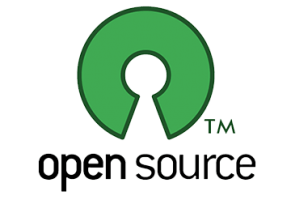Commercial-Quality Software
Open-source software gained significant strength with the rise of the Internet, offering a collaborative and decentralised development model where programmers contribute improvements and share them with the community, such as GitHub, where open source projects are hosted. A key advantage of open-source over proprietary software is that it is built on transparency, flexibility and universal accessibility.
Open-source software is distributed free of charge for personal or commercial use, but this does not imply that it is easy for anyone to master. In order to integrate, customise, and develop software or web applications that meet professional standards, it is necessary to have the relevant competencies in various coding languages and frameworks.
Why Open-Source?
Open-source solutions are as professional, secure, and efficient as proprietary alternatives. Many enterprise-grade systems rely on open-source technologies due to their scalability, adaptability, and security.
Key advantages
✅ Transparent and auditable source code
✅ Free or low-cost to use
✅ Highly customisable and flexible
✅ Rapid bug fixes and security updates
✅ Encourages innovation through community collaboration
✅ No vendor lock-in
✅ Strong global support and documentation
Beyond the Myths: Open-Source vs. Proprietary Software
The assumption that proprietary software is inherently more secure or professional is increasingly outdated. Today’s open-source solutions follow global standards and are widely adopted in professional environments, including powering the majority of the world’s servers with Linux.
To unlock the full potential of open-source technology, solid expertise is essential in areas such as:
✅ Version control systems (e.g., Git)
✅ Command-line interface (CLI) usage
✅ Programming and scripting languages
✅ Dependency and package management
✅ System and network administration
✅ Security best practices and code auditing
✅ Collaboration tools and open-source licenses understanding
Whether you’re building a website, web application, or enterprise software, open source technologies offer a reliable, cost-effective, and sustainable alternative to proprietary software. A well-designed, user-friendly website is essential for establishing a strong online presence and building credibility for businesses and individuals.
The Long-Term Value of Open-Source Technologies
Open-source software evolves organically and continuously, enabling scalable improvements in both code quality and user experience (UX) over time. This drives stronger architecture, enhanced security, and greater overall stability.
As open-source technologies gain wider adoption, they drive a dynamic ecosystem of businesses, developers and service providers, fostering continuous innovation and long-term success.
Big Tech & Open-Source
Major tech players such as Google, Apple, Facebook, Amazon, and Microsoft (GAFAM) are committed to open-source, providing APIs, libraries, and frameworks that are integrated with today’s web applications and IT projects.
However, it should be noted that the term ‘open-source’ does not always imply ‘free’. While the source code is accessible to the public, it is protected by copyrights, and its usage is governed by specific licensing terms. Hybrid models combining open-source components with proprietary features are commonly adopted by startups, SMEs and large enterprises.
Open source technologies offer flexibility, cost effectiveness and long-term viability. This makes them a strategic asset for robust and scalable IT infrastructures.










